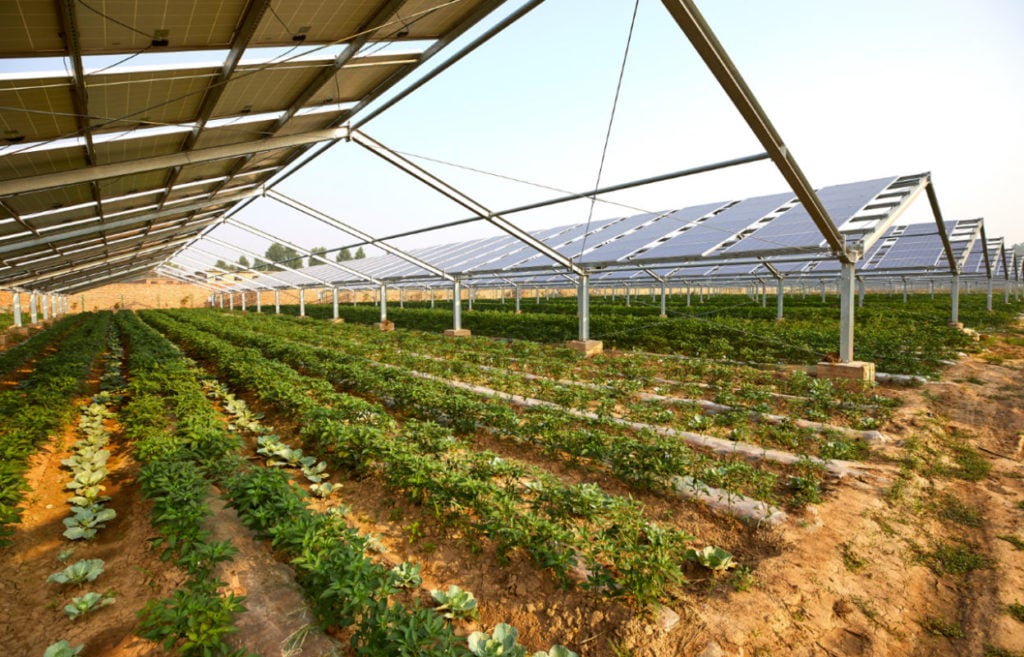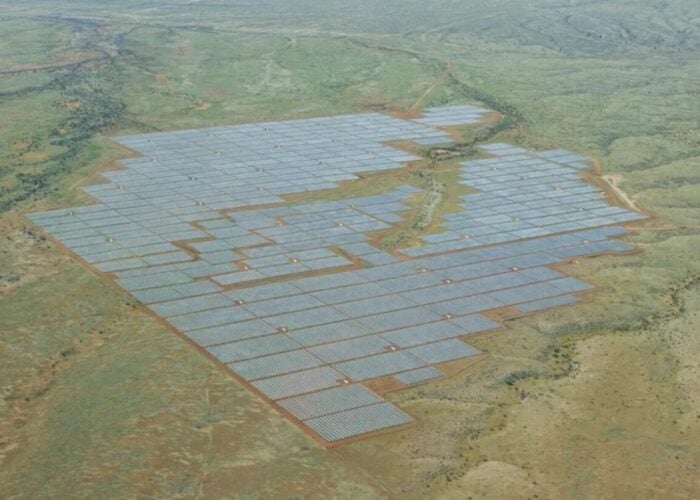
Solar photovoltaics (PV) are a central part of the energy transition, representing more than half of all renewable deployments worldwide. In 2023, more than 350GW of new solar capacity was installed, which is greater than any other energy source by a wide margin. Much of this growth is due to solar energy’s ease of deployment and competitive economics; however, it’s not without its own challenges.
Notably, solar PV can require ten times more land than coal- or natural gas-fired plants, giving rise to concerns that productive agricultural land is being traded in place of electricity generation.
Unlock unlimited access for 12 whole months of distinctive global analysis
Photovoltaics International is now included.
- Regular insight and analysis of the industry’s biggest developments
- In-depth interviews with the industry’s leading figures
- Unlimited digital access to the PV Tech Power journal catalogue
- Unlimited digital access to the Photovoltaics International journal catalogue
- Access to more than 1,000 technical papers
- Discounts on Solar Media’s portfolio of events, in-person and virtual
Agrivoltaics, is an emerging market that addresses these land use concerns by harmonising electricity generation and food production, either crop or livestock, on the same land plots. Despite its relative nascence, the widespread versatility of agrivoltaics has garnered significant traction, with more than 14GW of capacity installed globally, and potential for much more.
The EU recently highlighted a report showing that agrivoltaics on just 1% of the bloc’s farmland could grow installed solar to approximately 944GW, which is more than four times the EU’s total capacity to date, and has since moved forward with billions in project funding.
Our company, Ampt, has been involved in the agrivoltaics sector since 2018, when our products were used to power a 12MW PV system with solar modules mounted over crops for a farm-to-table grocery store chain in Asia. Since then, practices in agrivoltaics have significantly advanced along with our solutions to support this growing market.
A range of uses
The implementations of agrivoltaics are varied and can include a combination of traditional ground-mounted PV arrays with livestock grazing, elevated PV array canopies over crops grown on trees or vines, and other variations that promote biodiversity, pollinator and ecosystem health.
Co-locating PV systems with agriculture improves land use efficiency and introduces new opportunities for farmers to boost crop growth, conserve water and increase economic productivity and resiliency. The partial shade created by PV arrays, for example, causes some crops to grow larger in an effort to capture additional sunlight.
Overhead PV modules also create ideal conditions for plant growth by keeping temperatures beneath the panels more stable: warmer during the night and cooler during the day. While less predictable, covering crops with PV modules also offers protection from severe weather conditions such as heavy rain and hail, helping minimise crop losses and protecting yield profitability. Agrivoltaics can also help facilitate water conservation, as shielding the crops minimises evaporation losses.
It’s not just livestock and crops that reap benefits. Agrivoltaic installations provide symbiotic benefits to PV systems too. For example, while PV systems provide shade for livestock, the animals graze to control vegetative undergrowth, a process usually handled through expensive manual upkeep or environmentally taxing herbicide applications.
Similarly, PV canopies provide shade for crops to reduce the amount of direct sunlight hitting the soil. This enhances vegetation production by retaining moisture and decreasing temperatures for the crops. In return, plants release water vapour through pores in their leaves, a process known as evapotranspiration, which further contributes to creating a cool microclimate under the array. These cooler temperatures help the PV modules run more efficiently and generate more electricity.
And for farmers, agrivoltaics can boost land productivity through additional and predictable revenue streams, helping complement food production with energy generation and other grid services. The new revenue streams, in addition to making agriculture more profitable, can help counter the risk of crop loss — a growing concern considering the effects of climate change — while offsetting the carbon footprint of farming operations and ensuring operational continuity.
Complexities and challenges
Co-locating PV systems with agricultural lands has many mutual benefits, yet farmers and developers still face a number of challenges when it comes to building agrivoltaic systems because they tend to be technologically complex, often integrating more than just PV canopy structures above crops.
Maximising the amount of PV generated in agrivoltaic systems helps lower fixed project and interconnection costs relative to generation capacity, meaning farmers have a built-in incentive to pursue more comprehensive agrivoltaic systems. As a result, it’s common for deployments to include rooftop PV systems on nearby buildings as well as deploy standard ground-mounted arrays in areas not suitable for food production.
Yet the situation is further complicated by on-site agricultural uses of renewable energy that span diverse loads such as barns, greenhouses, pump houses, temperature-controlled storehouses, staff and administrative facilities, residences and processing machinery. It’s also beneficial for agrivoltaic systems to incorporate energy storage to provide backup power and reduce time-of-use and demand charges, as well as to deploy charging stations that support electric farming equipment and electric vehicles (EVs).
Each of these systems and structures exhibit distinct load characteristics, with fluctuations in both generation and consumption patterns based on the time of day, weather conditions and a range of other factors. The challenges associated with uniting these various producers and consumers of energy within the same agrivoltaic ecosystem to achieve operational goals can be daunting and expensive without the right technology.
The role of string optimisers
Fortunately, advancements in direct current (DC) power management technology help address these complexities. Borrowing from mission-critical, utility-scale PV solar-plus-storage power plants, agrivoltaic system developers are now deploying DC/DC string optimisers with fixed voltage architectures to overcome integration challenges.
String optimisers are DC/DC converters that are installed in the PV array and perform maximum power point tracking (MPPT) on each string of PV modules. The full available PV power is then delivered at a high and fixed DC voltage to downstream systems and loads. This unique combination of features unlocks value across the agrivoltaic system.
String-level MPPT eliminates electrical mismatch, which is amplified in agrivoltaic systems because they are typically built around existing crops, irrigation and property layouts, which makes the PV modules more prone to variations in orientation and tilt angles, both in the field and on rooftops. Dusty farming environments also expose PV modules to uneven soiling.
These conditions cause inconsistent sun exposure across PV modules, which leads to electrical mismatch that can result in substantial energy losses over the solar plant’s lifespan. Performing MPPT closer to the source of generation delivers more lifetime energy to improve project ROI.
Integrating superior technology
Using string optimisers to provide a programmable fixed voltage to the DC bus that is shared by the PV, energy storage, and other systems removes variability, to make it easier to unite these systems with simplified controls and faster response times.
Without string optimisers, the DC bus voltage varies throughout the day due to the fluctuating irradiance and temperatures across the PV array. This requires each of the connected devices to manage these unpredictable changes individually, which makes it challenging to coordinate controls between the PV inverter and battery converter, for example. Conversely, a fixed DC bus voltage brings stability and predictability to the system to reduce the burden of managing individual components for easier controls with faster control loops.
A fixed DC bus voltage also makes it easier to deploy DC-coupled systems, which are more desirable than alternating current (AC)-coupled architectures. This is because PV arrays, energy storage, electric farming equipment and electric vehicles are DC-based technologies. Uniting these devices on a DC bus eliminates the cost of extra DC-to-AC power conversion devices while improving energy efficiency, reducing risk of grid curtailment and capturing clipping losses that are normally associated with AC-coupled systems.
Additionally, the fixed DC voltage can be set to a higher value that is closer to the maximum system voltage. The higher DC bus voltage mitigates the voltage drop losses that occur as a result of the distance between the sources of generation and loads which are spread out over a wide area in agrivoltaic systems and are often far from the point of interconnection to the grid. By transmitting the energy at a higher voltage with string optimisers, developers can achieve greater distances at a lower cost by using smaller conductors.
Improved flexibility
String optimisers give agrivoltaic designers greater string sizing flexibility. This helps tailor the layout of PV modules in the available space without compromising performance. For systems using solar trackers, this flexibility helps maximise the utilisation of each solar tracker to reduce the number of trackers per megawatt.
The devices also provide wireless PV string-level performance data, which enables remote monitoring to swiftly identify system issues. By having visibility of current, voltage, and other data for each PV string, system operators can analyse trends, detect anomalies and anticipate potential challenges before they escalate to ensure a proactive and preventive maintenance approach to system management.
Agrivoltaic systems especially benefit from remote diagnostics, which minimise the need for physical inspections to limit foot traffic in areas where crops are being grown. Remote string-level data enhances operations and maintenance by improving labour efficiency, reducing system downtime and lowering annual costs.
Agrivoltaic systems represent an innovative and economical opportunity to expand the footprint of clean, solar energy while increasing the efficiency of land use to protect agricultural legacies for generations to come. String optimisers can be used to address some of the challenges that are inherent with deploying PV and complementary systems in agricultural environments to help lower the cost and improve the performance of agrivoltaics.
With smart planning and the right technology, agrivoltaic systems are poised to deliver a significant win for agricultural landowners, solar PV developers and the climate.
Levent Gun is the CEO of solar optimiser manufacturer Ampt, and has worked in technical and senior executive-level positions for over 25 years. He has registered 14 patents and holds a Ph.D. in Electrical Engineering from the University of Maryland.







